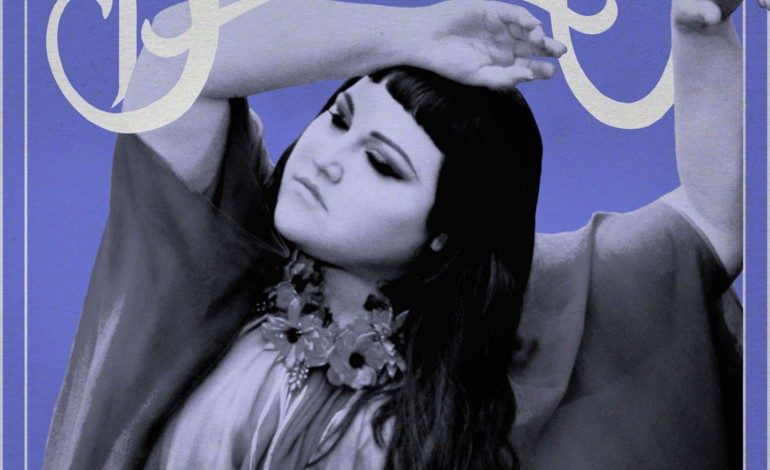

Ditto Stops Changing Form!
Anybody else read that New Yorker article about how creepy it is that Miley Cyrus is suddenly back to retro country? If her whiplash-inducing 180 is any barometer of the tastes of today, then it’s pretty clear: the ’70s are back. Or rather, the presentation of female pop stars as earthy, down-home singer-songwriters is back. Lana, Miley and now Beth Ditto are all moving forward by going back.
Beth Ditto has released Fake Sugar, and the album cover alone is enough to get one excited. This isn’t just a retro album cover for the sake of it. This cover looks authentically flatly colored and ready to be seen encasing a vinyl, edges deteriorating and all. It looks connected with its history, denoting authenticity (fittingly titled Fake Sugar), which is a rare commodity. The first song, “Fire,” however, does not fall in line with this idea. While retro and groovy sounding, “Fire” comes off less like an artistic venture and more like a music supervisor pick that would underscore a cheeky “the-gang-gets-together-to-pull-off-another-big-heist” montage from the CW. A practice that exists in the hunt for authentic music is weeding out those faux retro songs that sound right in touch with that perfect corporate blues sound that The Black Keys have, sadly, come to embrace. Surprise, “Fire” is the lead single. The last time many heard Ditto singing, she was wailing her heart out on Gossip’s “Heavy Cross” in 2009. She is so reserved on this song, so what is her game plan here? However, Beth Ditto herself is noted as saying it is not the song she would have picked as the lead single. Remember, Ditto is an intelligent, fashionable woman. She knows what’s up, so, on the album goes. And deliver, it does.
Where “Fire” brings up familiar apprehensions, “In and Out” shoos all of them away in one whispered, girl group-ian, fell swoop. The melody is insanely catchy, and Ditto’s intuitive delivery displays her musical maturity that makes the song work on so many levels. Singing along is inevitable. Any questions as to “why?” are silenced, and the listener instead says, “Alright, I’m in. What else you got”?
If someone wanted to listen to a ’70s album, they’d just listen to Carly Simon. So, can Ditto inject this music with a sense of relevance today? And then, the drum track on “Fake Sugar” begins. Mac DeMarco and others these days are playing with drum tracks over analog guitar (new meets familiar), an approach reveling in the contrast. “Fake Sugar,” however, takes this contrast and makes it subtle, moody and, ultimately, new-sounding. The concept of false affection is given so much more depth with this production, and delivers its modern theme fantastically.
Another issue, though, after a bit of a backward step toward “Fire” on “Savoir Faire” — evocative intro aside — is what of Ditto’s ability to be vocally explosive? “Heavy Cross” lingers on the mind for a moment again, and then “We Could Run” starts, and it starts to make sense. Ditto’s maturity has manifested in the slow, tactful build on this song. This is how she is evolving her youthful flare, by revealing a possible inner desire to be a power ballad singer like those of the past. That is the true authenticity, finding a much more believable story than that of so many other pop stars right now. It feels like a sarcastic, invulnerable friend finally revealing their dreams. The moment is there, and just like in real life, it flickers away.
“Oo La La” — another music supervisor-friendly single — and “Go Baby Go” return to the perfect aesthetic detachment of “Fire.” The magic of “We Could Run” and “In and Out” delivered their messages in tight, unique ways. The rest of the songs play almost like falling action to Fake Sugar’s dynamic start. But, for that four-song journey at the beginning, where authenticity began to feel possible for a few fleeting moments in time? Well worth it.
